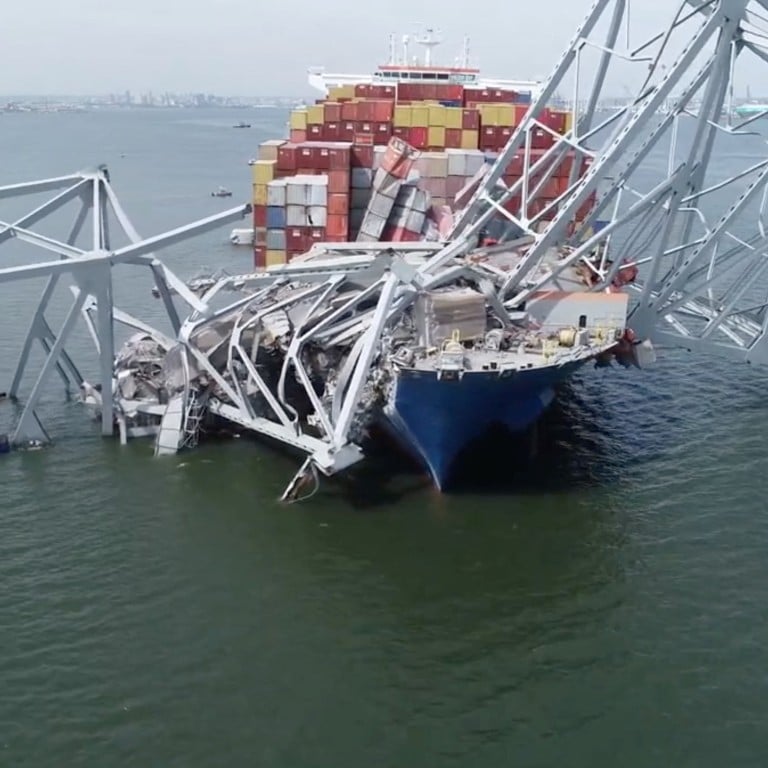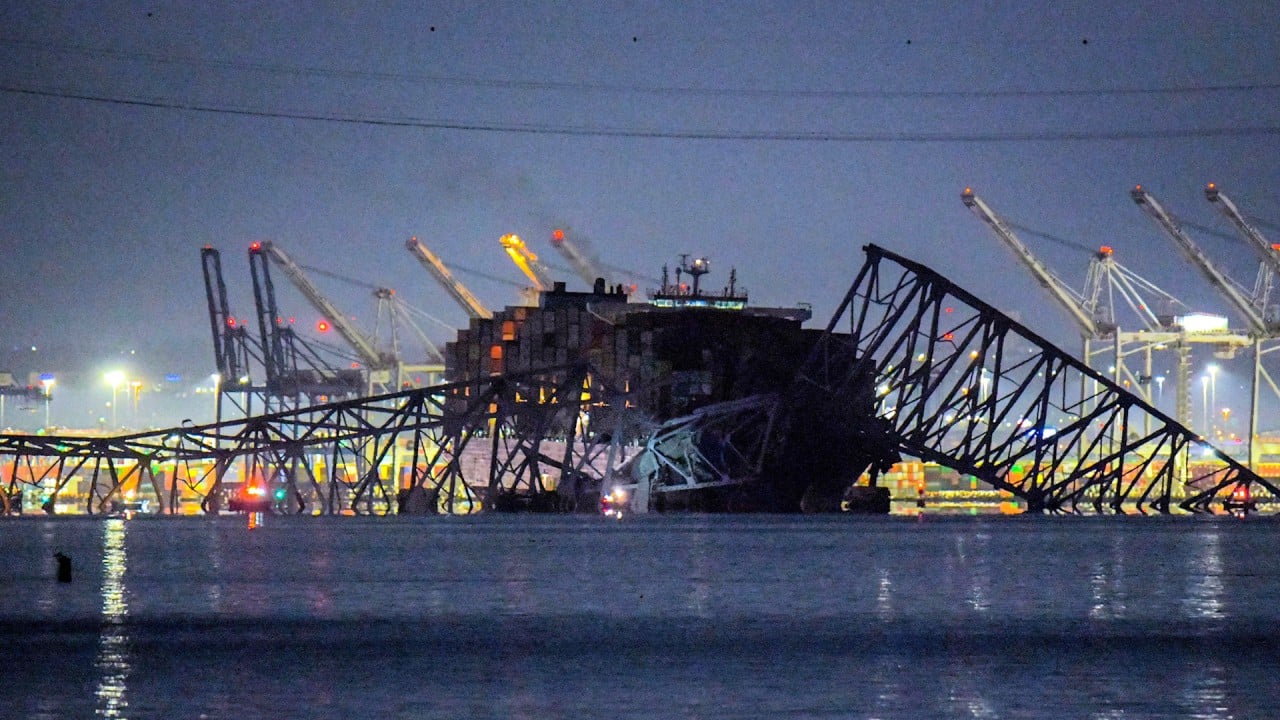
Collapsed Baltimore bridge could take months to reopen, disrupting industries from cars to coal
- The collapse of the Francis Scott Key Bridge has blocked shipments in and out of the Baltimore port that handled 1.3 million tonnes of cargo last year
- Experts say it could take months to remove the wreckage and an extended disruption could have major economic consequences
The Dali container ship collided with one of the bridge’s support beams early Tuesday morning, causing large portions of the 2.5km (1.6 mile) bridge to collapse into the Patapsco River, with the wreckage effectively blocking ships from moving in and out of the Port of Baltimore.
The port is currently closed to vessels until further notice, with officials saying it’s unclear when it will be able to reopen.
Industry experts say it could take months and that an extended disruption could have major economic consequences, as well as direct impacts on the port’s biggest imports and exports.
“If the port is closed, it’s going to impact all of them,” Daraius Irani, chief economist for the Regional Economic Studies Institute at Towson University, told Business Insider.
The Port of Baltimore is the top port in the US for roll-on/roll-off cargo, which refers to wheeled cargo like vehicles, construction equipment, and agriculture equipment, according to the port.
Baltimore bridge collapse: 6 presumed dead after Singapore ship rammed structure
In 2023, the port handled 847,158 automobiles and light trucks – more than any other US port for the thirteenth straight year – according to data from the Port of Baltimore.
“Baltimore is relatively unique in having the infrastructure to accept the cars and to store them until they ultimately reach their final destination,” Anirban Basu, economist, founder, and CEO of Baltimore-based Sage Policy Group, told BI.
Roll-on/roll-off cargo is especially difficult to divert to other ports, in part because it generally takes up a lot of space and requires specific handling.
General Motors told BI that it expects the collapse to have a “minimal impact” on their operations. “Our thoughts are with those who were affected and the Baltimore community,” the statement said, adding: “We are working to re-route any vehicle shipments to other ports as the recovery work continues.”
A spokesperson from Ford said, “Where workarounds are necessary, our team has already secured shipping alternatives.”
The Port of Baltimore said it handled 1.3 million tonnes of imported roll-on/roll-off cargo in 2023, including heavy farm and construction equipment.
Basu said Caterpillar, a maker of construction, mining, and agricultural equipment, also moves much of its product through the Port of Baltimore. Caterpillar did not immediately respond to a request for comment from BI.
In 2022, coal was among the top export commodities by weight moved through the Port of Baltimore. In 2023, the port ranked second in the US for coal exports, according to the port.
“The Port of Baltimore, over time, has developed the ability to store and then load coal onto ships and have those ships go places long and far, including India,” Basu said, noting Maryland’s proximity to West Virginia and coal country. “And so tonnes of coal are set not to be sent abroad in the near term as the port suffers this lack of operability.”
In 2023, the Port of Baltimore was also the top US port for imported gypsum, a mineral commonly used in fertiliser and construction material, and imported sugar, according to the port, which has a Domino Sugar refinery operating nearby.
ASR Group, whose companies include Domino Sugar and C&H Sugar, told BI in an emailed statement they do not expect any short-term impacts to their operations in Baltimore.
“The Baltimore Refinery has six to eight weeks of raw sugar supply on hand with a ship currently discharging at the refinery’s dock and another that finished unloading on Monday, March 25,” the statement said. “ASR Group also owns a network of production facilities and warehouses across the US that all currently have healthy inventories of finished products and can be utilised if necessary.”

Many other items pass through the port every day. According to the port, in 2022, that included 1,000 tonnes of aircraft and parts, 793,695 tonnes of paper, 24,900 tonnes of chocolate, and US$59.4 million worth of ice cream.
In 2023, 444,000 cruise ship passengers also departed from the terminal at the Port of Baltimore.
How much the port closure will impact each of these industries remains to be seen. “It really just depends on how much stuff was there before this accident happened,” economist Irani said.
A research briefing from Oxford Economics said the bridge collapse is likely to have a greater impact on the local Baltimore economy than on a national level.
“There is likely to be some temporary disruptions to certain industries, including automakers, but nothing that warrants an immediate change to our baseline forecast,” the briefing said. “Ultimately, the duration of the disruptions at the Port of Baltimore, along with how quickly trade can be rerouted, will determine the economic costs.


